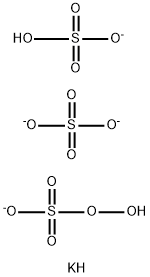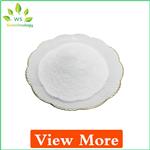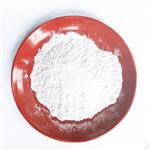Uses
Manufacture of dry laundry bleaches,
detergent-bleach washing compound, scouring
powders, plastic dishware cleaners, and metal
cleaners; hair-wave neutralizers, pharmaceuticals;
general oxidizing reactions.
Chemical Properties
Colorless, beautiful crystals; hygroscopic; pure material stable
for a few days, although with slight loss of active oxygen, the rate
of decomposition is catalysed by the impurities formed; vigorous
oxidizing agent. M.p. +45°C with slight decomposition.
Application
Potassium peroxosulfate is used for bleaching polyamide and cellulose fibers. However, it is ordinarily used only to clean wool and to reduce its shrinkage.
Purification Methods
This is a stable form of Caro's acid and should contain >4.7% of active oxygen. It can be used in EtOH/H2O and EtOH/AcOH/H2O solutions. If active oxygen is too low. it is best to prepare it afresh from 1mole of KHSO5, 0.5mole of KHSO4 and 0.5mole of K2SO4. [Kennedy & Stock J Org Chem 25 1901 1960, Stephenson US Patent 2,802,722 1957.] A rapid preparation of Caro's acid is made by stirring finely powdered potassium persulfate (M 270.3) into ice-cold conc H2SO4 (7mL) and when homogeneous add ice (40-50g). It is stable for several days if kept cold. Keep away from organic matter as it is a STRONG OXIDANT. A detailed preparation of Caro's acid (hypersulfuric acid, H2SO5) in crystalline form m ~45o from H2O2 and chlorosulfonic acid was described by Fehér in Handbook of Preparative Inorganic Chemistry (Ed. Brauer) Academic Press Vol I p 388 1963.






